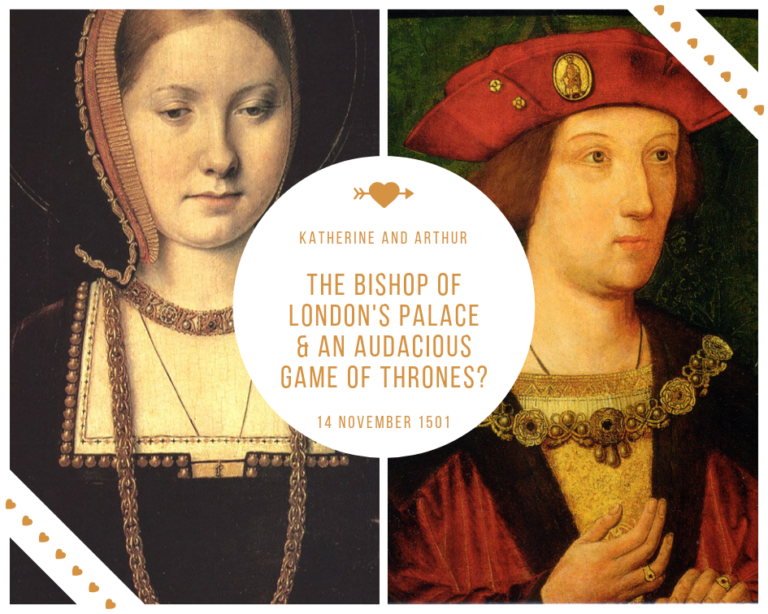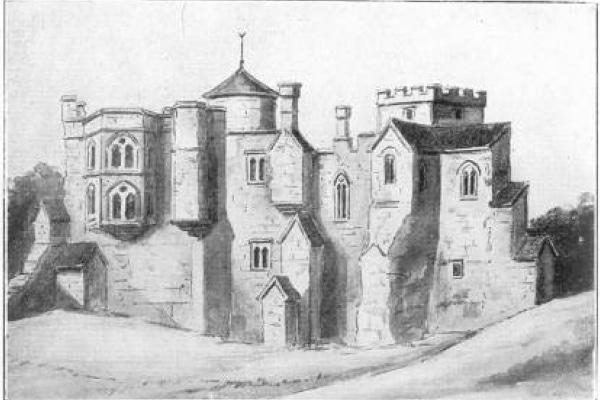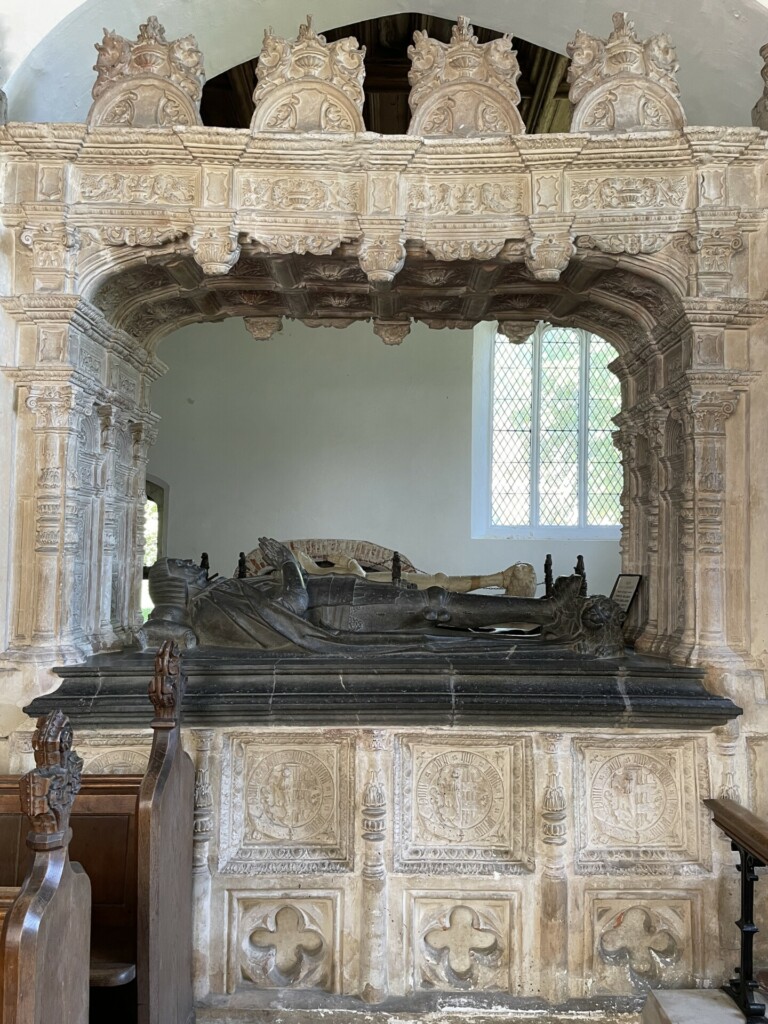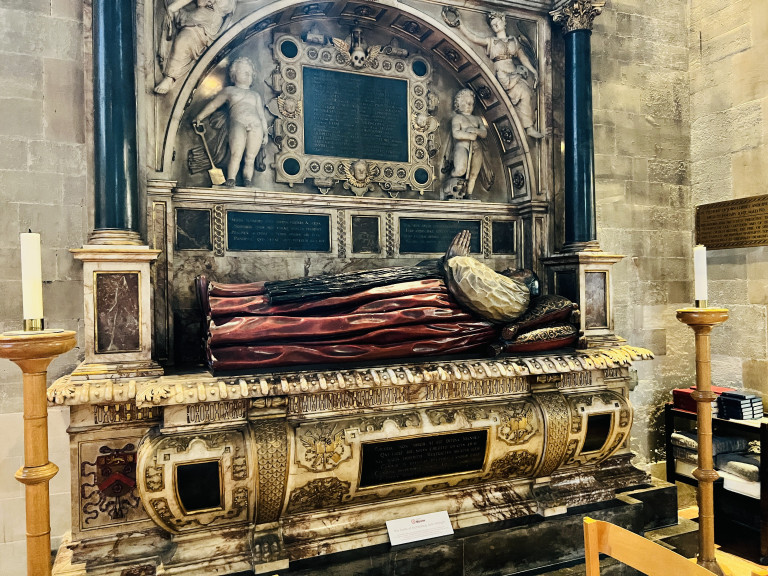Acton Court: An Authentic Tudor Courtier’s House
Acton Court is an exquisite example of a courtier’s house from the early Tudor period. I will say more about it in a moment, but probably the thing that makes Acton Court stand out is the fact that the house is in a raw state, which makes it one of the most authentic Tudor properties in England. Feel free to watch the following video and/or read the blog post below:
The Manor House is located close to the village of Iron Acton in the Vale of Berkeley, about 15 km Northeast of Bristol – one of the major cities of the south-west of England.
During the Tudor period, it was owned by the Poyntz family. The original manor was built in the thirteenth-century. The manorial complex contained three ranges all squeezed within the confines of a moat that entirely surrounded the property.
The person with whom we associate Acton Court today is Nicholas Poyntz, who lived during the reign of King Henry VIII. His grandfather had been a man of some substance who had served successfully under Henry VII, but it was his grandson, Nicholas, that as a young man was ambitious, well-connected and successful. At the time of his inheritance, he was closely connected to Henry VIII’s first minister, Thomas Cromwell. He was also a personal friend of Richard Cromwell and Richard Rich.

All the available evidence suggests that in 1535, in anticipation of a visit by King Henry VIII and his then-wife, Anne Boleyn, Nicholas began an extensive building campaign that lasted until his death in 1556.
As no building records survive, the precise date of this massive redevelopment project is based on archaeological, rather than historical, evidence. This includes the dating of tree-ring samples from the house’s roof timbers, which indicate a felling date of the spring of 1535. This, of course, ties in almost precisely with reports of a stay Acton Court, which was due to take place between Saturday 21 and Monday 23 August.
To accommodate the king and queen, Poyntz had the entire eastern, mediaeval kitchen range demolished and instead built an accommodation block fit for royalty, including many features considered de rigeur for the time.

The near-tragedy of Acton Court is that it was only in the 1970s that the true historical significance of the building came to light. It was a wreck by this time and close to collapse. Thankfully for us, a huge amount of conservation work has been done on the building since and, although some of the ranges associated with Poytnz’s development of the house are now lost, the east range, the range that was built to accommodate Henry VIII and Anne Boleyn still survives.
Historical Significance
In 1535, Henry VIII and Anne Boleyn were undergoing a three-and-a-half month-long summer progress that took them through great swathes of Berkshire, Oxfordshire, Gloucestershire, Wiltshire and Hampshire. About midway through the progress, the couple came to Acton Court, in Gloucestershire.
They were accommodated in the magnificent east range. Unfortunately, the original layout of the chambers on the ground floor has been lost, since for many years Acton Court was leased out to tenant farmers and used as a farmhouse. It is likely though that it is here that Anne Boleyn was accommodated beneath the King’s lodgings, as had been the case at Thornbury Castle, from where the couple had just come.

However, the first-floor suite remains largely untouched and consists of three great chambers; first, a presence chamber, which was lit by a huge oriel window, sited directly opposite where the king’s throne and canopy of estate would have been. Beyond that, in the privy chamber was a privy or dining chamber, used privately by the king for dining or entertaining, and beyond that his bedchamber. This also contained a large window that overlooked the formal gardens. Henry’s privy toilet, or garderobe, can still be seen in a small closet off the bedchamber. It is extraordinary to look upon it and think that in this very place Henry VIII, the great King of England, went to the lavatory!
The Wow! Factor at Acton Court
It is the raw authenticity of this building that takes one’s breath away, unencumbered as it is by later alterations and developments – even the internal furniture of the house is stripped bare, allowing your imagination to recreate the building as it was in the early sixteenth-century. It also gives you a great sense of the flow of the chambers from the public to the private, another fine illustration of some of the key features of the layout of an aristocratic house of its day.

In addition to all this, however, undoubtedly the feature of the house that is quite outstanding and utterly exceptional is the painted frieze, which runs around the upper wall of the middle of the privy chamber. This is contemporary to the building of the east range and was created to impress royal guests. It is completed in antick work and is thought to have been executed by a painter of considerable talent, possibly a court painter of French or Italian origin.
Oh, and before you go, you might want to look out for the Tudor graffiti, scratched into a window sill and dated 1589. Incredible!
Your Top Visitor Tips
As Acton Court is only open on a very limited number of days throughout the year, I recommend checking out their website for the latest news on up-and-coming events. If you are visiting the area, why not consider a visit to nearby Thornbury Castle (today run as a luxury hotel) and take afternoon tea in the garden if it is a lovely sunny day. It’s just glorious! Of course, if you are really feeling flush, you can book in to stay overnight in the very room used by Henry VIII during his visit on the 1535 progress, while the restaurant downstairs was once part of Anne Boleyn’s chambers.
For more details on this location, and around 70 more places visited by Anne Boleyn, pick up a copy of my book, In the Footsteps of Anne Boleyn, co-authored with Natalie Gruneninger from Amazon US and Amazon UK, as well as other online bookstores.
My Tudor Rose rating:
Historical Importance: 4 Tudor Roses
Wow Factor: 4 Tudor Roses
Authenticity: 5 Tudor Roses
Accessibility: 1 Tudor rose







Love this